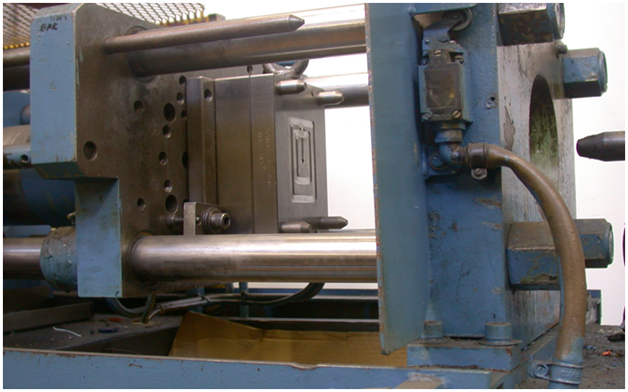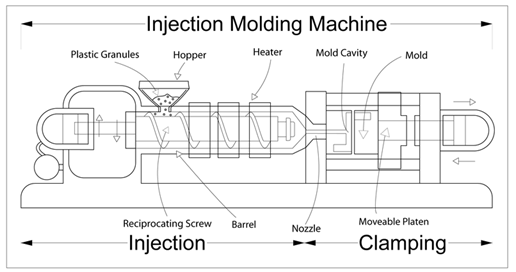People are often surprised to find out that injection moulding is one of the most versatile and creative production techniques; what’s more, we are about to see a wave of innovation linking this tried and trusted technology to embedded intelligence and 3D printing.

Why is it so versatile?
At its most basic, it involves injecting a liquid into a mould. The liquid is often made up of a polymer, but it could also be glass or a metal. Small pellets of the material are heated up until they melt, with the hot mixture squirted through a nozzle into the mould. The mould produces a ‘negative’ of the finished part. The molten material is then cooled down quickly, which solidifies it. The mould is opened, and ejector pins push the piece out of the mould.
Creativity and ‘micro-moulding’
From this description it should be clear that when it comes to creativity, there is almost no limit as to what you can do; for example, you can vary the materials that are heated up, combine materials, inject more than one, and alter colours and textures. Designers of children’s toys and other fun objects can have a field day! In addition, because intricate and finely detailed patterns can be produced, jewellery designers and artists are beginning to discover what can be done with injection moulding in small, number-limited runs. This is known as ‘micro-moulding’.

Injection moulding and 3D printing work brilliantly together
Many engineers use an injection moulding company such as http://pnplastics.co.uk/ to prototype newly-designed parts before the full production run. This is beginning to be integrated with 3D printing to produce a hybrid technology that is bound to develop rapidly. It is ideal when designers want to prototype a part, try it out, adjust the design, and try it again. Plastic cannot yet compete with steel tooling for robustness and resistance to high temperatures, of course, but the printed injection mould tool is developing all the time.
RFID tags can be embedded in the item
Radio frequency identification (RFID) is the use of tiny tags that can be read by radio waves. By adding these to injection-moulded items, it is possible to produce products that track themselves or transmit other kinds of information. Link this to the Internet of Things and the future possibilities suddenly get very exciting!

